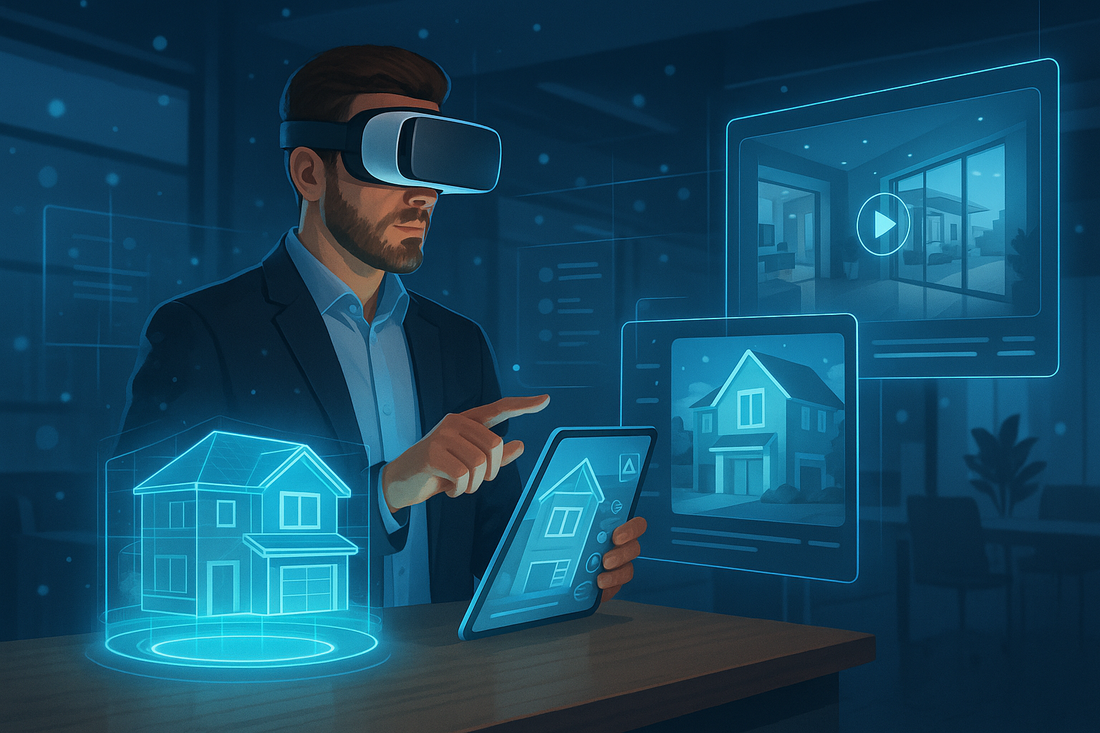
The Future of Real Estate Listings: Interactive Media Experiences
Share
The way people search for homes has changed dramatically over the last decade. Gone are the days when buyers relied solely on newspaper ads or static brochures. Today, over 90% of buyers begin their search online, scrolling through dozens of listings in minutes. In such a crowded marketplace, standing out requires more than photos and floor plans. The future of real estate listings lies in interactive media experiences—a dynamic blend of technology, storytelling, and engagement that transforms the way properties are showcased and sold.
What Are Interactive Media Experiences?
Interactive media experiences go beyond traditional marketing by making property exploration engaging and participatory. Instead of passively looking at photos, buyers can:
-
Walk through homes via 3D virtual tours.
-
Explore neighbourhoods through drone footage.
-
Reimagine spaces using virtual staging.
-
Customise interiors with augmented reality (AR) tools.
These innovations allow buyers to actively connect with a property, helping them picture not just a house, but a future lifestyle.
Why Interactive Media Is Reshaping Listings
1. Deeper Buyer Engagement
Interactive content holds attention longer than static visuals. When buyers can move through rooms at their own pace or experiment with furniture layouts, they develop a stronger emotional connection to the property. That engagement often translates into more serious inquiries.
2. Transparency and Trust
Interactive experiences minimise surprises. With 360° tours or drone footage, buyers can view every corner of a property before setting foot inside. This transparency builds confidence and helps buyers feel more informed, leading to quicker decisions.
3. Reaching Remote Audiences
As cross-border and out-of-town property purchases increase, interactive media makes it possible for buyers anywhere in the world to explore listings in detail. An overseas buyer can tour a home virtually, reducing travel costs and time while still forming a genuine connection with the property.
4. Showcasing Potential, Not Just Reality
Tools like virtual staging and AR let buyers visualize possibilities—whether it’s modern furniture in an empty room or a remodeled kitchen layout. This ability to see “what could be” makes listings more versatile and appealing.
5. Standing Out in a Competitive Market
With so many listings competing for clicks, interactive media helps properties shine. A listing that offers immersive tours or custom design options signals innovation and professionalism, giving both the agent and the property a competitive edge.
Examples of Interactive Tools Shaping the Future
-
3D Walkthroughs: Let buyers “walk” through a property from any device.
-
Drone Photography & Video: Showcase surroundings, landscapes, and access points.
-
Virtual & Augmented Reality: Provide immersive in-person simulations through VR headsets or AR apps.
-
Interactive Floor Plans: Allow buyers to click through rooms and explore layouts.
-
Lifestyle Videos: Blend property tours with storytelling about the neighborhood, culture, and lifestyle benefits.
Benefits for Agents and Sellers
Interactive listings don’t just benefit buyers—they also empower agents and sellers. Properties marketed with these tools tend to:
-
Sell faster due to increased buyer confidence.
-
Attract more qualified leads by filtering out casual browsers.
-
Enhance the agent’s credibility as a tech-savvy professional.
-
Reach wider audiences through shareable, engaging content.
The Road Ahead
Looking forward, interactive listings will only become more advanced. Artificial intelligence (AI) may soon personalise property tours based on buyer preferences, while mixed-reality environments could allow users to “test drive” different design styles in real time. The line between digital exploration and physical visits will blur, making online property experiences nearly indistinguishable from reality.
Final Thoughts
The future of real estate listings isn’t about more photos or longer descriptions—it’s about creating experiences. Interactive media transforms the way buyers discover, evaluate, and fall in love with properties. By combining technology with storytelling, these tools not only make listings more engaging but also foster trust, transparency, and emotional connection.
For agents and sellers, adopting interactive media is no longer optional—it’s essential. In a fast-paced, digital-first world, those who embrace these innovations will not only stand out but also redefine what it means to market real estate successfully.
